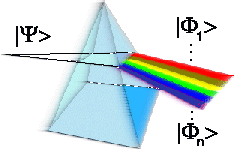M. Zaluska-Kotur
Properties and behavior of modified minority game are analyzed. It appears that results of the game depend strongly on the way how we draw strategies for players. The probability that given strategy will be chosen is determined by the polarization parameter P. This parameter differs between strategies that go along or against the existing market trend. Strong polarization of the space leads to the periodic dynamics and, finally, for negative P values to the domination of the single strategy in the system. When P is changed the variability of the process decreases, showing kind of the phase transition region. The dependence of the variability on the polarization parameter can be understood on the basis of the crowd--anticrowd theory.
Acta Phys B Vol. 36, No. 8, (2005)
Aug 16, 2005
Aug 5, 2005
Emission of Thermally Activated Electrons from Rare Gas Clusters Irradiated with Intense VUV Light Pulses from a Free Electron Laser
Laarmann T, Rusek M, Wabnitz H, Schulz J, de Castro AR, Gürtler P, Laasch W, Möller T
The ionization dynamics of Ar and Xe clusters irradiated with intense vacuum ultraviolet light from a free-electron laser is investigated using photoelectron spectroscopy. Clusters comprising between 70 and 900 atoms were irradiated with femtosecond pulses at 95 nm wavelength (~13 eV photon energy) and a peak intensity of ~4×1012 W/cm2. A broad thermal distribution of emitted electrons from clusters with a maximum kinetic energy up to 30–40 eV is observed. The observation of relatively low-energy photoelectrons is in good agreement with calculations using a time-dependent Thomas-Fermi model and gives experimental evidence of an outer ionization process of the clusters, due to delayed thermoelectronic emission.
Phys Rev Lett. 2005 Aug 5;95(6):063402. Epub 2005 Aug 5
The ionization dynamics of Ar and Xe clusters irradiated with intense vacuum ultraviolet light from a free-electron laser is investigated using photoelectron spectroscopy. Clusters comprising between 70 and 900 atoms were irradiated with femtosecond pulses at 95 nm wavelength (~13 eV photon energy) and a peak intensity of ~4×1012 W/cm2. A broad thermal distribution of emitted electrons from clusters with a maximum kinetic energy up to 30–40 eV is observed. The observation of relatively low-energy photoelectrons is in good agreement with calculations using a time-dependent Thomas-Fermi model and gives experimental evidence of an outer ionization process of the clusters, due to delayed thermoelectronic emission.
Phys Rev Lett. 2005 Aug 5;95(6):063402. Epub 2005 Aug 5
Subscribe to:
Comments (Atom)
